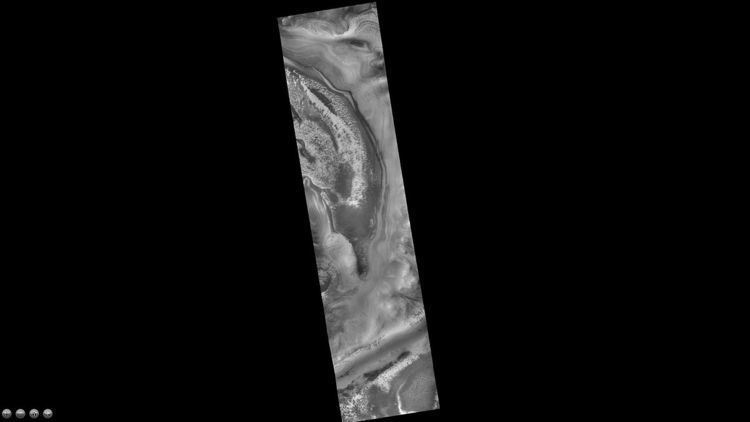 | ||
Reynolds Crater is an impact crater in the Mare Australe quadrangle of Mars, located at 75.1°S latitude and 157.9°W longitude. It is 97.5 km in diameter and was named after Osborne Reynolds, and the name was approved in 1973 by the International Astronomical Union (IAU) Working Group for Planetary System Nomenclature (WGPSN).
Contents
Spiders
During the winter, much frost accumulates. It freezes out directly onto the surface of the permanent polar cap, which is made of water ice covered with layers of dust and sand. The deposit begins as a layer of dusty CO2 frost. Over the winter, it recrystalizes and becomes denser. The dust and sand particles caught in the frost slowly sink. By the time temperatures rise in the spring, the frost layer has become a slab of semi-transparent ice about 3 feet thick, lying on a substrate of dark sand and dust. This dark material absorbs light and causes the ice to sublimate (turn directly into a gas) Eventually much gas accumulates and becomes pressurized. When it finds a weak spot, the gas escapes and blows out the dust. Speeds can reach 100 miles per hour. Dark channels can sometimes be seen; they are called "spiders." The surface appears covered with dark spots when this process is occurring. These features can be seen in some of the pictures below.
Why craters are important
The density of impact craters is used to determine the surface ages of Mars and other solar system bodies. The older the surface, the more craters present. Crater shapes can reveal the presence of ground ice.
